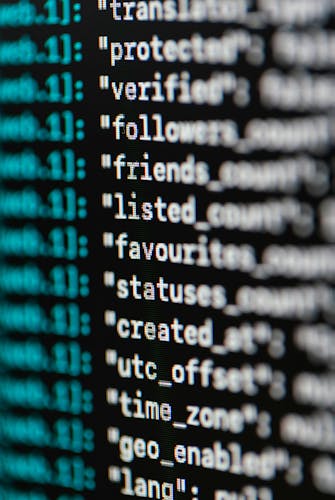
July 8 • 6 min read
The Barber Who Wasn't There
Ever wonder why our digital world, with its perfect code and curated profiles, feels so messy and anxious? Discover how a paradoxical riddle about a barber's impossible existence can illuminate the inherent contradictions found in diverse issues, such as biased artificial intelligence and the unrealistic expectation of 'authenticity' online. It's a journey into the logical flaws that define our age, ending with an empowering solution: it's time to pick up the razor yourself.
Have you ever heard the old riddle about the village barber?
He’s a very particular guy. He shaves all the men in the village who don’t shave themselves, and only those men. It sounds simple enough until you ask the killer question: Who shaves the barber? If he shaves himself, he breaks his own rule because he’s only supposed to shave guys who don’t shave themselves. But if he doesn’t shave himself, he falls into the category of men he’s obligated to shave. It’s a brain-twisting, inescapable loop created by self-reference. The only real answer is that this barber, in his perfectly logical, black-and-white world, can’t possibly exist.

This isn't just a dusty philosophical puzzle; it’s a warning sign about the limits of logic itself. It has a surprisingly modern cousin, dreamed up by the brilliant Alan Turing, the father of computer science. He came up with something called the "Halting Problem," which is essentially the Barber's Paradox recast in computer code. Turing wondered if it was possible to write a perfect program—let's call it HALT—that could examine any other program and predict, with 100% accuracy, whether that program would eventually complete its task (halt) or become stuck in an infinite loop.
Here’s where the barber walks in. Turing imagined a mischievous little program that does the exact opposite of whatever HALT predicts. If HALT examines this program and says, "It will halt," the program is designed to immediately start looping indefinitely. If HALT says, "It will loop forever," the program is designed to immediately halt. Just like the barber, this perfect, all-knowing HALT program can't exist. It’s a fundamental, built-in limit to what even the most powerful computers can ever know for certain.
Why should we care about the Barber's paradox?
It might seem abstract, but this ghost of a paradox haunts our daily lives. We are surrounded by systems that promise a clean, logical, and perfect world, but they are all built on this fundamentally shaky ground. The cracks show up everywhere.
Think about Artificial Intelligence. We ask AI to be an "unbiased" decision-maker for things like hiring or loan applications. But we train it on mountains of data from our own messy, biased human world. We’re asking the AI to be a member of the set of "unbiased decision-makers" while defining it with the set of "biased human decisions." It's a logical impossibility. The result? We get AI that learns our worst habits, like the recruiting tool that taught itself to discriminate against women. The AI becomes a biased barber, faithfully applying a flawed rule. This paradox also explains AI "hallucinations"—when a system designed to provide facts confidently invents them instead. It's trying to resolve a query its data can't support, so it generates the most statistically plausible fiction.
Or consider our lives on social media. The unspoken rule is to be your "authentic self." But the very act of posting is a performance. We choose the best photo, edit the caption, and curate a gallery of our lives for an invisible audience. This is exacerbated by "context collapse," where our various social circles—friends, family, colleagues, and strangers—are all condensed into a single audience. The joke you’d tell your best friend isn’t the one you’d tell your boss, yet they see the same post. We are forced to either be blandly inoffensive to everyone or risk constant misunderstanding. We’re trying to be the person who presents their "unpresented" self—a digital version of the barber’s paradox. This quiet pressure to perform authenticity is a huge source of modern anxiety.
This same broken logic fuels the polarization we see everywhere. The algorithms that run our feeds are designed to keep us engaged, and nothing is more engaging than outrage. They act as automated barbers, meticulously "shaving" away any information that contradicts what we already believe. We get trapped in echo chambers where our own views are amplified back at us, making us more certain we are right and that anyone who disagrees is not just wrong but a bad person. We are sorted into clean, simple tribes—"us" vs. "them"—that can't withstand the messy reality of a nuanced world.

Pick up the razor yourself

So, if our technology is inherently flawed, our digital lives are built on a contradiction, and our public square is a funhouse of mirrors, what are we supposed to do? If we can’t rely on the world to be simple and we can’t find the mythical barber to make sense of it all, the only option left is to pick up the razor yourself.
This is the surprisingly empowering art of practicing intentional technology use. It’s a philosophy sometimes called "Digital Minimalism," and it doesn’t mean you have to delete all your accounts and move to a cabin. It just means you stop being a passive consumer and start being a discerning customer of your own attention. It begins with a "digital declutter"—an honest audit of which apps and digital habits actually add value to your life and which ones are just sources of anxiety or distraction. Then comes the hard part: getting rid of what doesn't serve you.
It’s about asking a simple question of every app, every notification, and every feed: "Is this tool serving my goals, or am I serving its goals?"
You wouldn't let just any stranger into your home to rearrange your furniture, so why let any app rearrange your focus? By setting your own firm rules—such as turning off all notifications except those from actual humans, establishing "no-phone zones" at the dinner table, or scheduling "digital sunsets" an hour before bed—you reclaim space for what truly matters. You create time for high-quality leisure activities, such as reading a book, learning a new skill, or having an uninterrupted conversation.
You’re not rejecting technology; you are elevating it to its proper place as a tool, not a master. You are becoming your own barber, deciding for yourself what parts of your life need shaping. The paradox of the barber teaches us that no perfect, all-knowing system can save us from the messiness of the world. The real solution is to embrace a little intellectual humility, accept the ambiguity, and, in that quiet, deliberate act of choosing, find the clarity we were looking for all along.
References and further reading
- What is Russell's paradox? Scientific American, https://www.scientificamerican.com/article/what-is-russells-paradox/
- Barber & Russell Paradoxes (History of Undecidability Part 2) - Computerphile, https://www.youtube.com/watch?v=FK3kifY-geM
- When AI Gets It Wrong: Addressing AI Hallucinations and Bias, https://mitsloanedtech.mit.edu/ai/basics/addressing-ai-hallucinations-and-bias/
- Be Yourself: Authenticity on Social Media Leads to a Happier Life, https://business.columbia.edu/press-releases/cbs-press-releases/be-yourself-authenticity-social
- Alone Together by Sherry Turkle | Hachette Book Group, https://www.hachettebookgroup.com/titles/sherry-turkle/alone-together/9780465093656/?lens=basic-books
- Beyond Black & White: The Risk of Thinking in Binaries - Spiegeloog, https://www.spiegeloog.amsterdam/beyond-black-white-the-risk-of-thinking-in-binaries
- How To Create A Digital Minimalism Practice And Protect Your Mental Peace, https://www.thegoodtrade.com/features/what-is-digital-minimalism/





